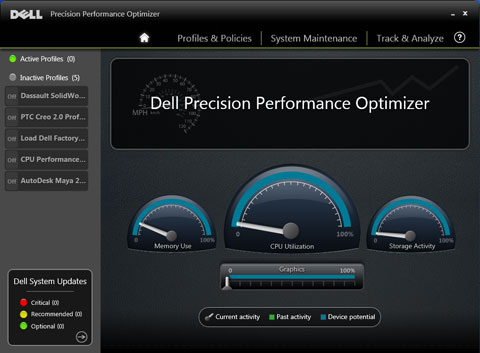
In addition to launching new workstations, Dell has also extended the reach of its Dell Precision Performance Optimizer (DPPO) software to tune its machines for 3ds Max and Inventor
Dell has released three new Haswell-EP Xeon E5 desktop workstations: the single CPU Precision T5810 and dual CPU Precision T7810 and T7910.
The big news is what’s inside – two important new workstation components: Intel’s Haswell-based Xeon CPU (plus 2,133MHz DDR4 memory) and new GPUs from AMD FirePro and Nvidia Quadro. According to Dell, the alignment of these new technologies makes it one of its most significant workstation releases in a while.
While Intel won’t officially reveal details of its new Haswell-based Xeon E5-2600 v3 CPU family until September we expect there to be a significant rise in the number CPU cores, a step up from the maximum 12 cores that came with the Ivy Bridge-based Xeon E5-2600 v2.
The new machines will replace Dell’s Ivy Bridge-based Intel Xeon workstations, the Precision T3610, T5610 and T7610.
Despite the model number adjustments, which is to help group its dual processor machines closer together, there’s no big change in terms of chassis. However, Dell explains that its engineering team has improved acoustics by optimising the fans inside the machines.
Dell has confirmed that it will offer a wider choice of processors in all of its new workstations and, interestingly, boost the number of CPU cores on offer in its single processor T5810. The workstation team told DEVELOP3D it will add three select Xeon E5-2600 v3 series CPUs to go alongside the standard Xeon E5-1600 v3 chips, but it can’t yet say which ones.
Boosting the core count in its single processor machine (previously limited to six cores) should be an interesting proposition for users of CAE or ray-trace rendering software. There’s the promise of a performance increase in multi-threaded applications without having to invest in a more expensive dual CPU system.
Other new features include a doubling of memory capacity in all machines thanks to the introduction of 32GB and 64GB DIMMs later this year, plus 12Gbit/sec storage controllers, kicking off with a 2.5-inch 400GB SAS SSD
Dell Precision Performance Optimiser (DPPO)
Last year Dell launched the Dell Precision Performance Optimizer (DPPO), a software tool designed to simplify, automate and optimise workstation settings. The software, which ships with all new Dell Precision workstations, can be used to monitor memory, CPU, storage and GPU usage. It also helps users manage software, driver and firmware updates.
On September 4, Dell will release version 2.0, which improves the system management by providing better integration with professional graphics. Dell says it has worked closely with Nvidia and AMD to achieve this.
In addition, the company has added a number of new application profiles, bringing the total number of apps that can be optimised at the click of a button to 13. The big ones are Autodesk Inventor and Autodesk 3ds Max, joining others that were part of the 1.0 release, including NX, Catia, SolidWorks and Creo. DPPO v2.0 will also work with previous generation Dell Precision workstations that supported the technology.
You can read more about what goes into making DPPO tick in our Dell Precision Labs report, where we also look at all the jiggery-pokery that goes into making a Dell Precision workstation fast and stable.
Rack workstation: Precision R7910
Alongside the launch of its new desktop workstations, Dell has released details of its new rack workstation, the Precision R7910, the replacement for the R7610.
The 2U machine is based on the same Haswell-based Xeons found in its T7910 so expect a significant increase in the number of supported CPU cores.
Alongside the availability of 64GB DDR4 memory DIMMs later this year, which will give the machine up to 1TB of memory in total, this should be big news for Virtual Desktop Infrastructure (VDI) environments meaning you can get more CAD users on a single machine.
While CPU cores and memory is on the rise, GPU power is actually moving in the opposite direction. The Precision R7910 can only support two Nvidia GRID K2A GPUs compared to the R7610’s three, which was pretty unique in the marketplace
Dell explains that this was a small, but necessary trade off in order to support iDRAC (integrated Dell Remote Access Controller), a data center-level lights-out management technology, and VMWare, both critical for Dell’s rack workstation offering moving forward. It also points out that new GPUs are coming down the road that will have more cores.
“We think the amount of graphics capabilities that the system can deliver, particularly when mapped against some exceptional CPU resource capabilities that we have the right balance there,” concludes Dell’s Don Maynard.






